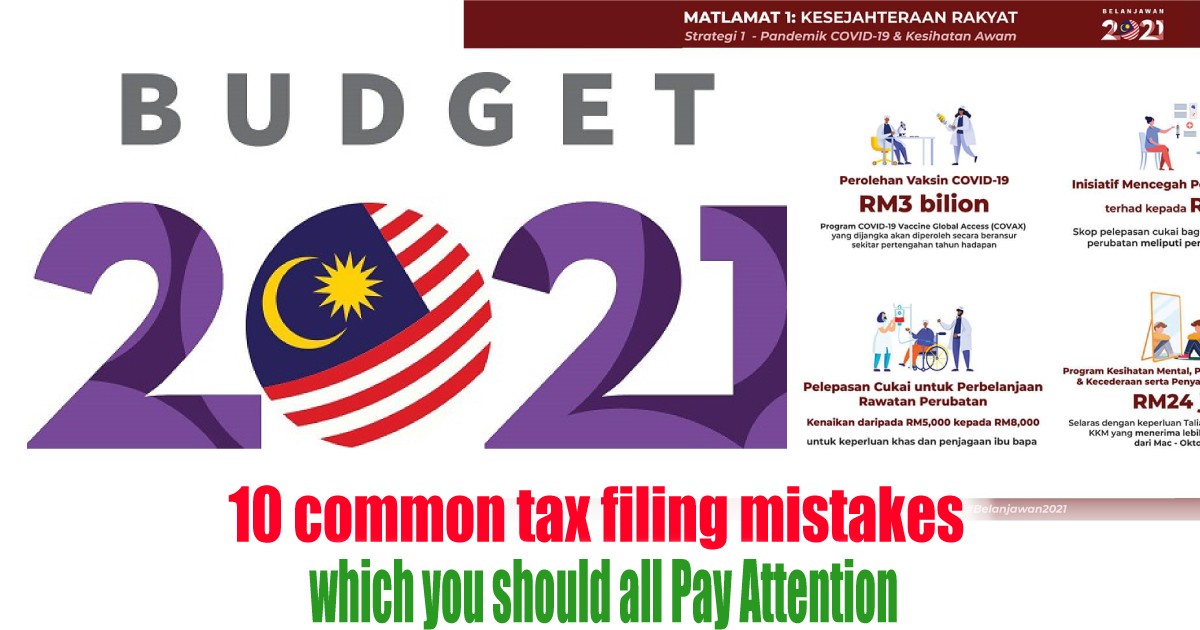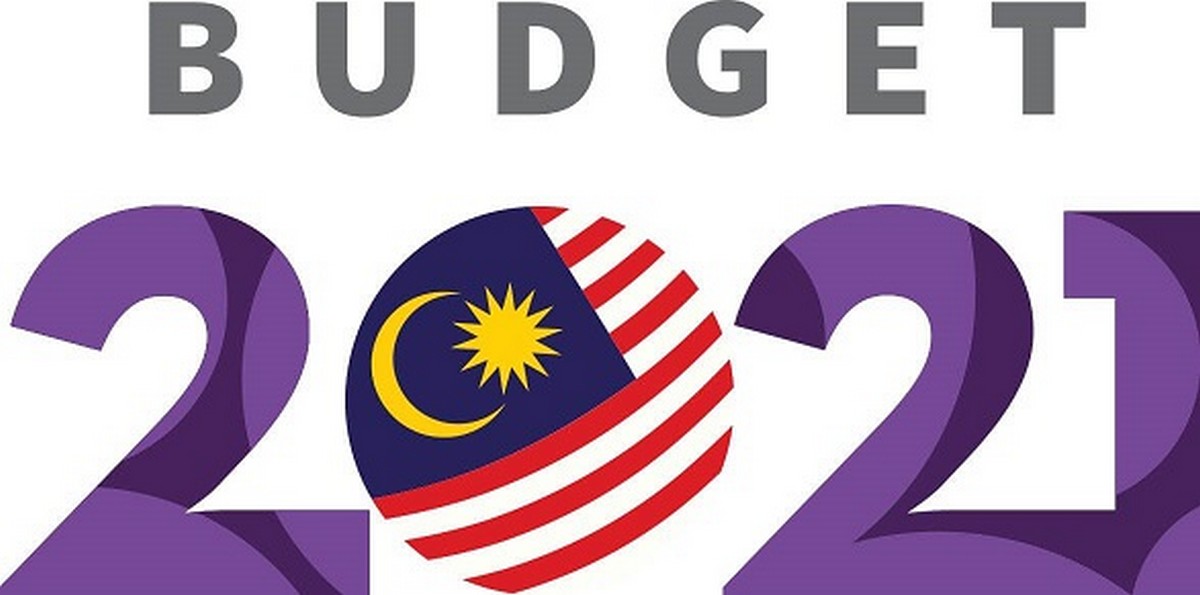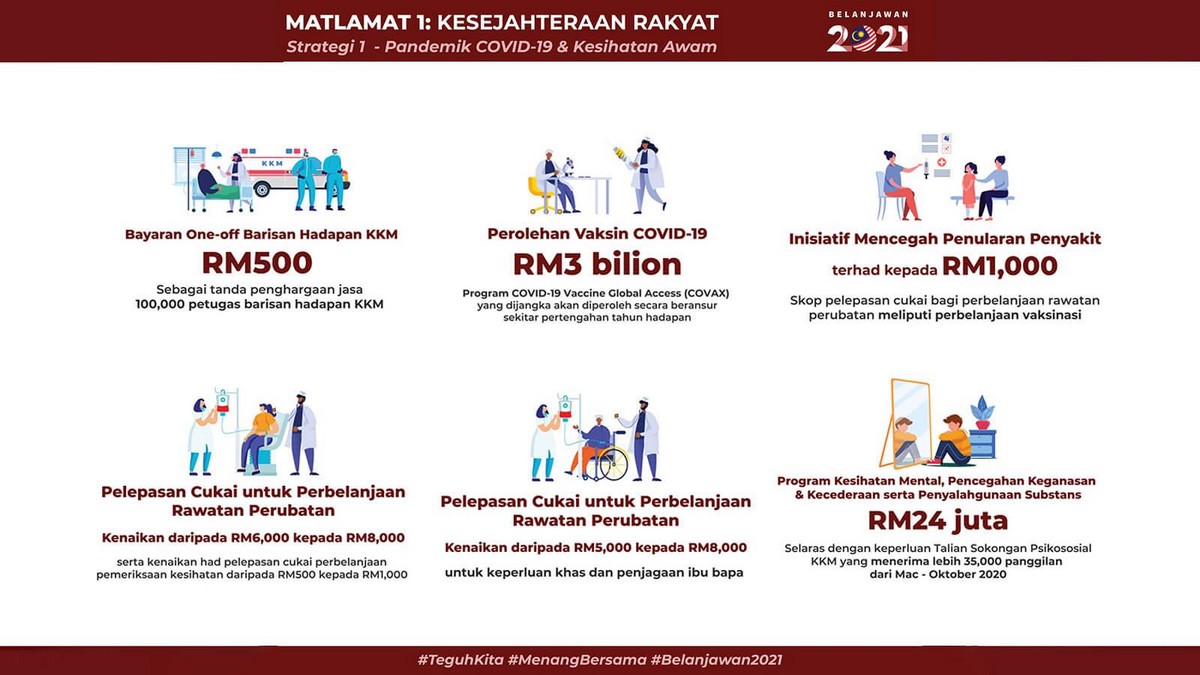10 common tax filing mistakes which you should all Pay Attention
Budget 2021
Some of the Key Highlights
March and April of each year are the tax returns for Malaysian workers. Although most people now use electronic tax filing, it is easier than the previous forms to file tax returns. As the Inland Revenue Department becomes more and more active in tax inspections, tax experts have pointed out 10 tax filing traps to remind taxpayers to make good use of various items. When reducing or exempting, make sure that you “fill in the correct tax form” and “report the correct tax” to avoid incorrect tax reporting or tax evasion, which will be dealt with by the authorities.
Mistakes in tax filing: no additional income reported
Many salaried families also earn more income part-time jobs outside of their formal careers, but fail to report these additional income such as rental income, commissions, referral fees, etc. Where should I fill in?
If you have rental income under your name, you should fill in “B2” in Part B of the BE form, which is the legal income from rent. However, you only need to report the net income after deducting costs. For example, rent income can be deducted from land tax, housing insurance premiums, maintenance fees, etc., but not for furniture or air-conditioners and other equipment expenses. If there are other income, fill in “B3”, that is, “Other income from interest, discounts, royalties, other regular income…”
Misunderstanding 2: Reporting wrong income tax forms
Taxpayers with multiple sources of income often cannot distinguish between the income tax forms they submit. To put it simply, ordinary wage earners who have no business and no income from business should submit the BE form; if they do business by themselves in addition to part-time work, such as opening restaurants with friends, driving Grab, online trading, etc. It belongs to business income and should be reported to Form B.
Tax filing myth 3: Late filing of taxes
Many taxpayers like to postpone their tax returns until the last minute, or even fail to complete their tax returns before the prescribed deadline.
Myth 4: Not reporting material benefits
Some employers will provide benefits in kind to employees, such as company cars, mobile phones, and company payment for accommodation, etc. However, employees often ignore not reporting these benefits when filing taxes. These material benefits are taxable income and must be taxed.
Misunderstanding 5: No tax deduction certificate
When the government provides relief, it also requires the taxpayer applying for it to keep relevant supporting documents. For example, receipts for buying books, computers, parents’ medical expenses, etc.
Misunderstanding of tax filing 6: Fading receipts
When the officials came to check the taxes and you cooperated to take out the receipts that had been kept for several years, you realized that most of the receipts had become “blank paper” without any words! Tragedy at this time…
Taxpayers may know that they have to keep the receipts, but ignore that many receipts on the market are thermal receipts, which will fade or even leave no writing. A more appropriate way is to scan or take photos to archive and categorize these receipts.
Myth 7: Tax-free income is regarded as taxable income
Some taxpayers mistakenly treat some tax-free allowances or benefits as taxable income when estimating their tax returns, and as a result, they have to pay more taxes in disguise.
The total amount of tax-free allowances will be separately indicated in the bottom part of the EA form that the employer prepares for the taxpayer. Remember, the amount in this column does not need to be reported, and it is not necessary to fill in the BE form.
Tax filing myth #8: claim unrecognized donations
Not all donations are tax deductible, and only organizations or foundations approved by the government can claim deductions for their donations. The total amount of donations that can be claimed is limited to 7% of the cumulative income. However, some taxpayers did not know whether the donations can be tax deductible, so they applied for this donation relief.
How to identify the donation organization is recognized by the government? If it is a donation to an accredited institution or foundation, the relevant receipt will indicate words similar to “government accredited donation institution”.
Tax filing myth 9: Can’t prove tax filing
Electronic tax filing will be archived and receipts can be used to prove that the tax has been filed or paid. However, for taxpayers who have submitted or mailed their tax returns, it may not be possible to prove that they have submitted tax returns and paid taxes. The tax bureau will not issue a “received” notice after receiving the tax form. If the tax form is unfortunately lost, the taxpayer may be in trouble. Unless the taxpayer has paid the tax and kept the receipt, it can prove that the tax has been filed.
Myth 10 of tax filing: No record kept
Don’t think that all receipts, insurance premium statements and other documents can be thrown away after completing the tax return. The Tax Bureau requires taxpayers to properly keep these receipts and document records for at least 7 years after filing taxes.
Other Personal Tax relief





